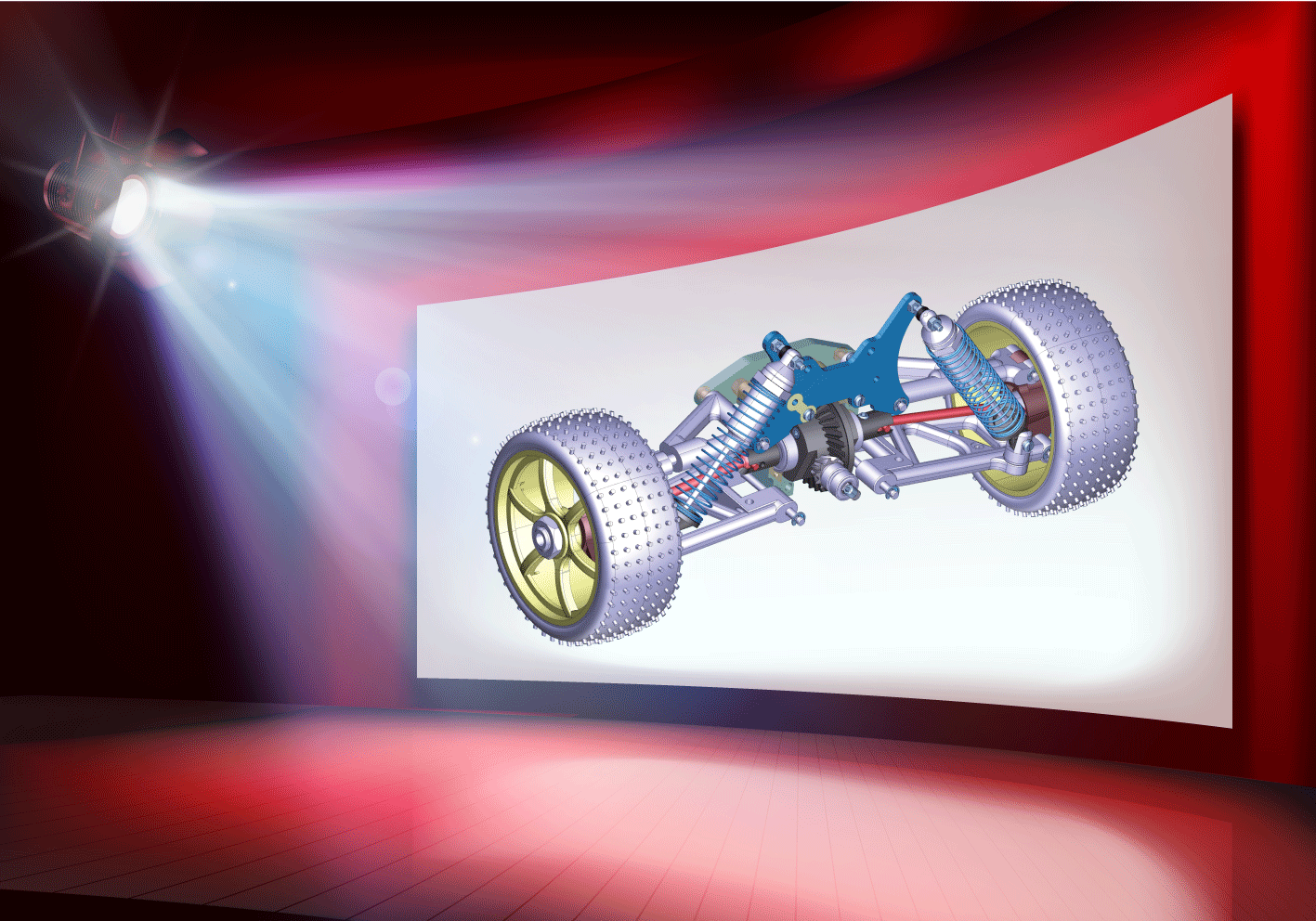Is there a space for traditional commercial Virtual Reality since the rise of the mixed reality headsets? Let’s look at a common use-case for VR; Design Reviews.
Design Reviews
Design Reviews have traditionally been completed by reviewing drawings, scale-models or prototypes. This changed during the last decade as Virtual Reality technologies became more common place.
Many organizations, particularly those in defense, automotive, and aerospace industries have purchased immersive Power-walls or Caves in order to carry out this activity. At the time of these installations, these large projection systems with multiple high powered GPUs were the only way to handle large amounts of CAD data to be viewed in 3D and at a 1:1 scale. These projection systems are incredibly expensive and are often managed by a local expert who acts as both administrator and the super user. Often, they are so difficult/complex to use that only a handful of people can use these really expensive assets, that can cost as much as $1M+. This leaves the majority of the engineers responsible for a project out of the VR experience.
These systems are a blend of tracking technologies and stereo projection using 3D glasses. The blend of the tracking with the projected image is so specialized that only a handful of companies can actually implement these high-end systems. In the case that there is an issue, your large investment is unusable until an expert can come on-site.
In addition to being complex and expensive, the amount of real-estate that they use (there needs to be sufficient space for the projectors behind the screens) means that you can lose up to 50% of your room! Even further lowering your ROI as space is at a premium in most organizations.
So, they’re expensive to build, very large, very complex, and often are in the hands of a single person or small group of people that can use them. Doesn’t sound particularly appealing does it? So how do we leverage these new technologies in a more productive and fiscally responsible manner?
Consumer VR
In recent years, the consumer gaming industry has made a large investment in making these technologies more efficient and readily available. Consumer spending on AR/VR content only (not including the devices) is expected to reach nearly $5 Billion in the US in 2019. This surge in demand for VR/AR experiences has caused the cost of devices to view them to plummet. Many VR devices can be purchased for less than $300 (you could buy around 2,000 of these for the cost of one Cave!). This enables more users to participate in the advantages of advanced visualization, increasing your ROI. (Not to mention, taking up no additional real estate within an organization)
Clearly, CAD and PLM data is not optimized for gaming devices. But we can leverage the light-weight, high speed rendering capabilities that the gaming industry has spent billions on developing (while the CAD and PLM vendors have not). The key is efficiently going from your PLM system to the devices without the need for a data science expert
Collaborate
The Theorem Solutions Digital Realities Design Review Experience allows multiple users to collaborate in the same virtual environment without the need to contact the resident expert to prepare the data, possibly delaying your design review. You can all walk around the product/assembly being reviewed and record your findings like you can with a cave, but you can do this in any room; it doesn’t have to be one kitted out with hundreds of thousands of dollars of technology.
In fact, it is even better than a Cave because the view is rendered to each individual user. In a Cave, only one person can be tracked. Usually, that is the person who is “driving” the experience. Accordingly, the viewpoint is rendered perfectly for them, but it is slightly off for everyone else in the cave, unless they are sitting on that person’s shoulders!
Moreover, with the Design Review Experience another person can join in using VR or a desktop version of the application from anywhere in the world. They simply appear as an avatar in the virtual world that you are working in! Of course, these large projection VR systems can also do this, but then you’ve bought multiples of these, if your budget allows!
Another benefit is that you are not limited to the physical size of the Cave or Power-wall. Unless the projection system is absolutely gigantic you can only get a handful of people in the same collaborative session. With the Design Review Experience, you can have 30! The only problem now is that there could be too many people with an opinion!
So, a collaborative design review in a head mounted display is a personal experience for everyone involved, it is a fraction of the cost (even it you bought 30 HTC Vive/Lenovo Explorers, etc you’re still nowhere near the cost of a Power-wall or Cave) it takes up less space and isn’t so specialist that only one person can use it.
Sounds to me that maybe the time of the Power-wall/Cave is at an end?
Read more on advanced visualization here: Exploring the Cognitive Gap and the potential of XR technologies.



